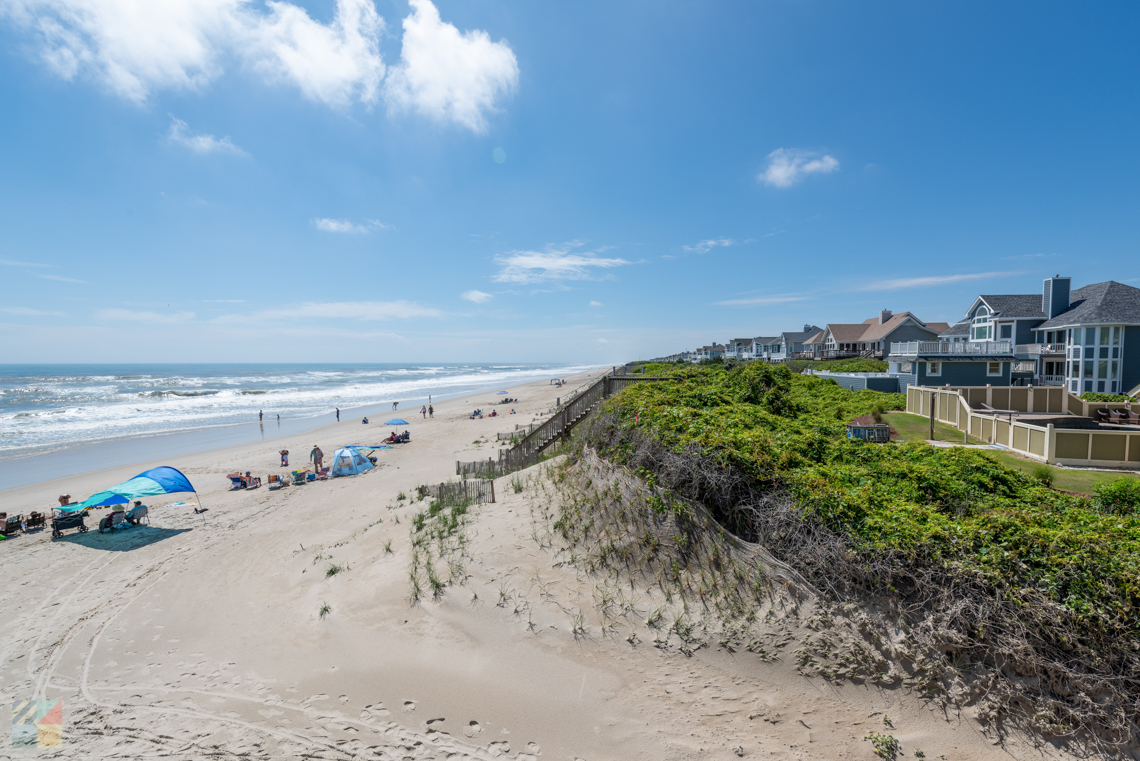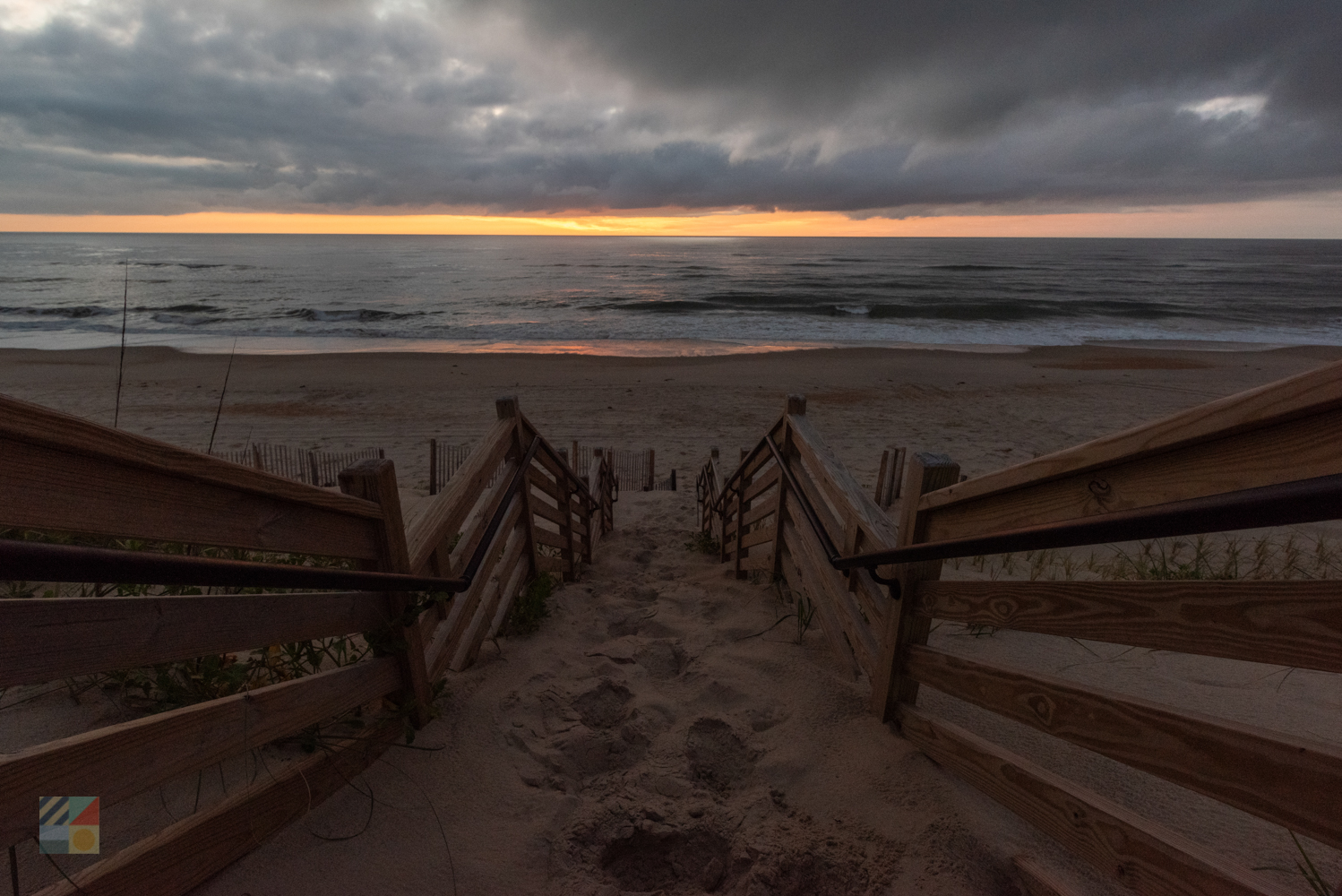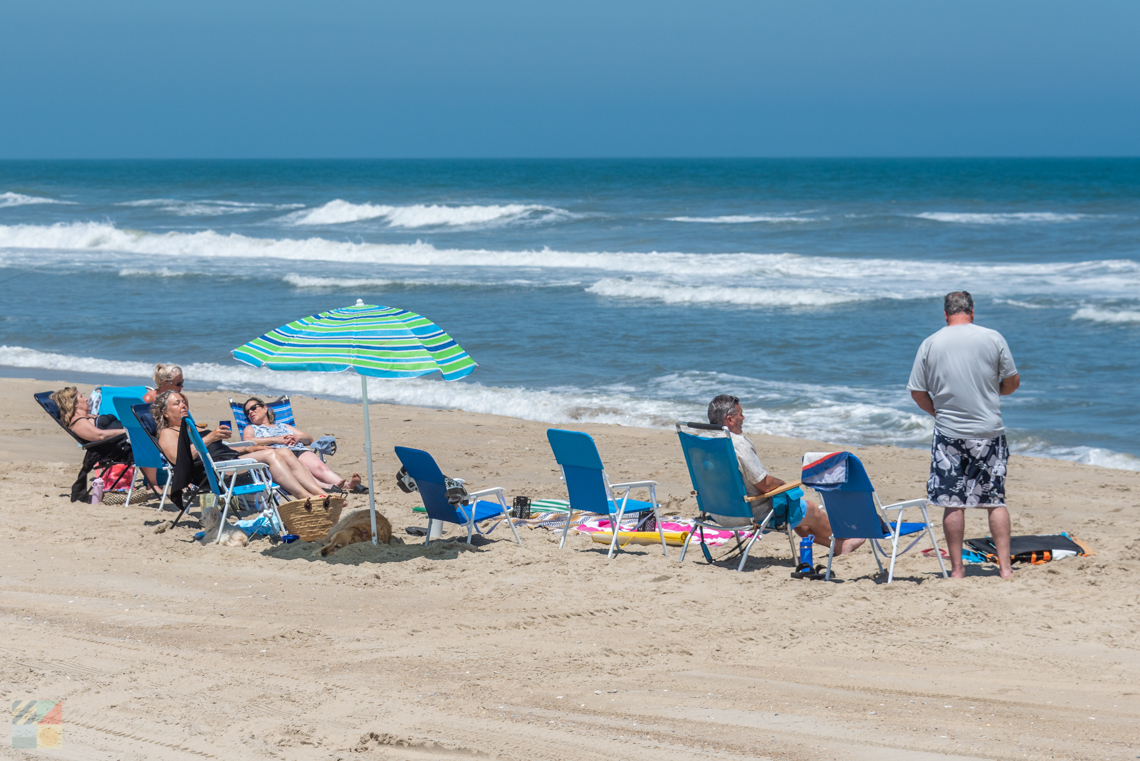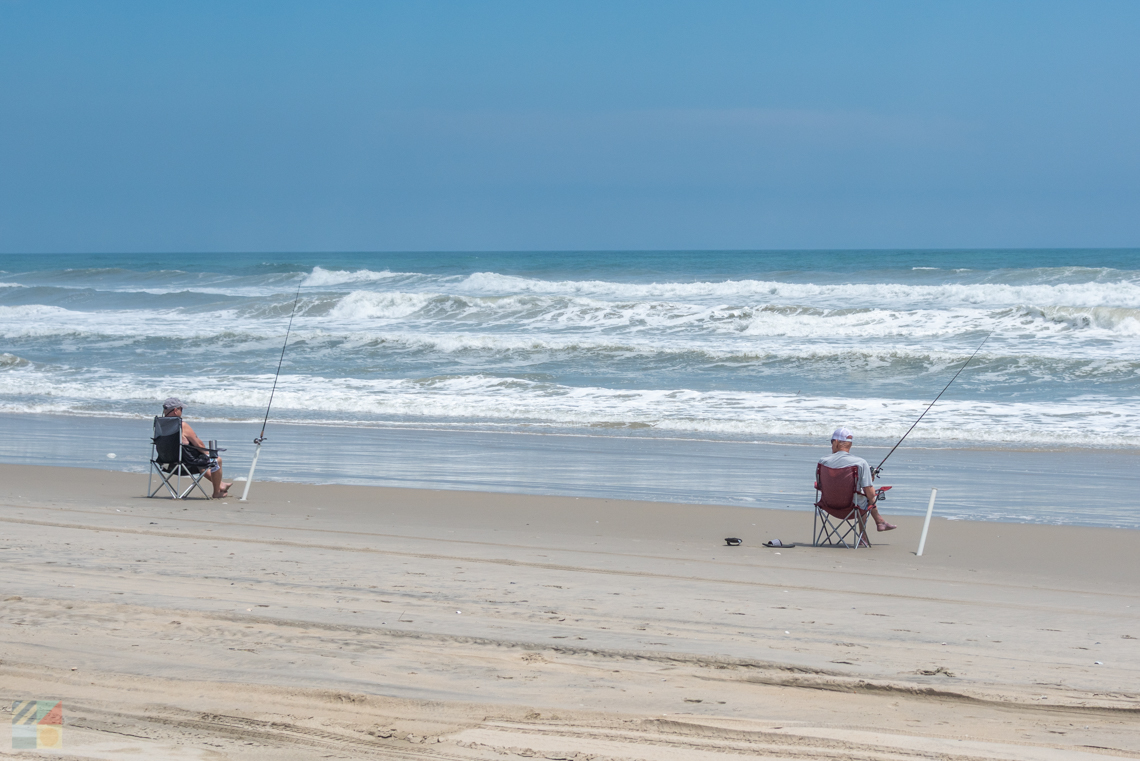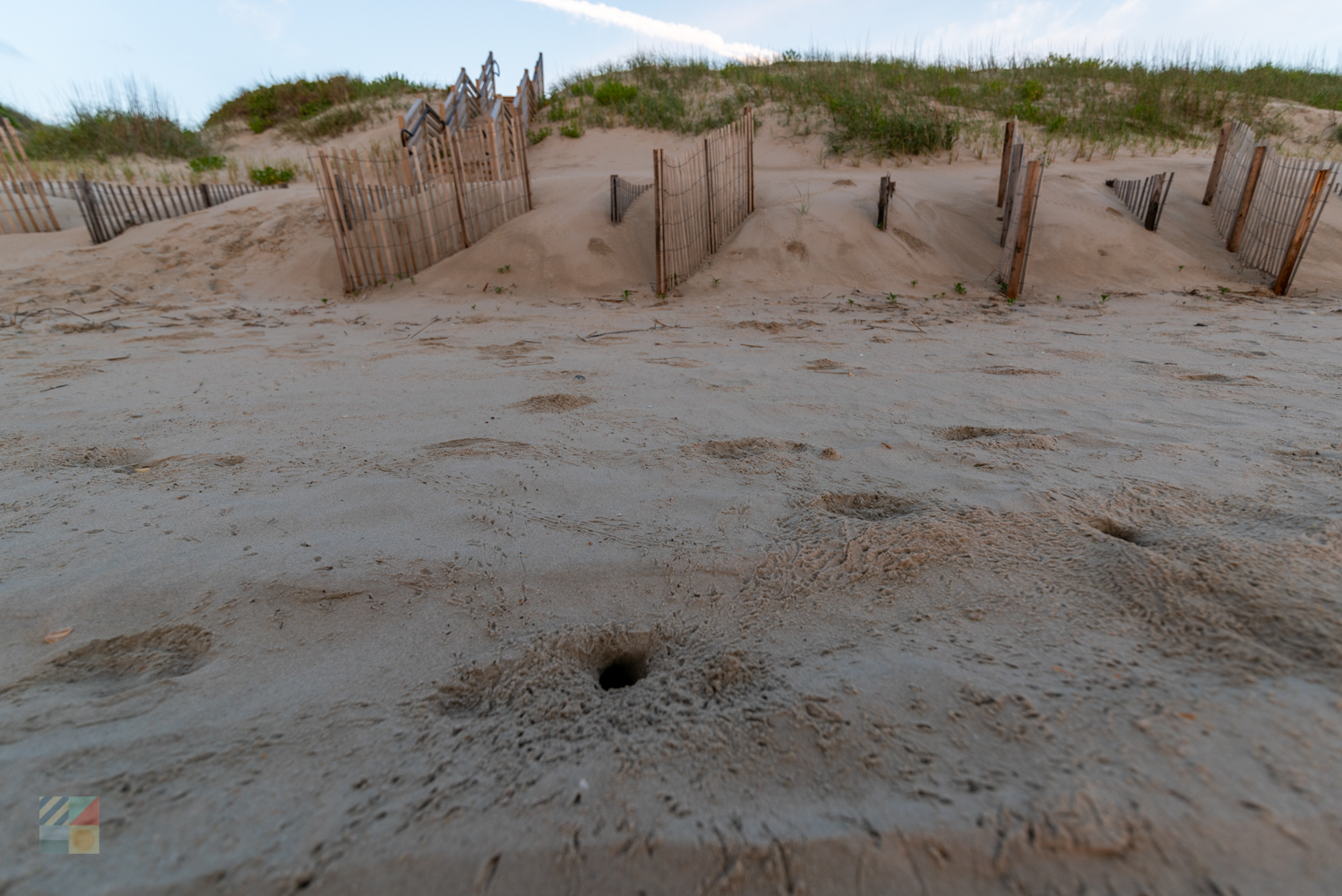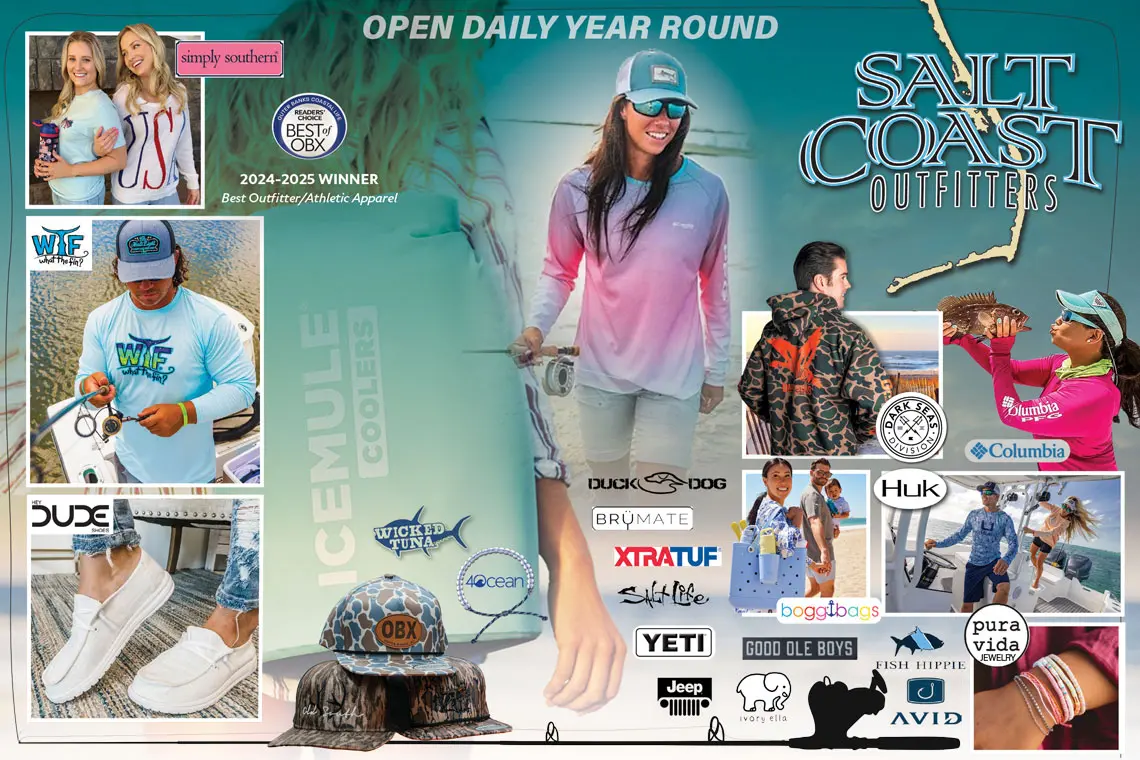Currituck County is effectively divided in two by the Currituck Sound, which creates two distinct and ecologically diverse regions: the Currituck Mainland, and the Currituck Barrier Island Beaches.
The Currituck Beaches are also referred to as the Northern Outer Banks, Currituck Island, or just "Corolla," which is the primary town in this region.
The barrier island region of the county attracts the bulk of Currituck's visitors, due to its miles of shoreline, famed historic attractions, and vast selection of shops, activities and vacation rentals. As such, every Currituck County visitor should make one visit to this famed region, which is distinctive, beautiful, and an ideal vacation destination for beach lovers.
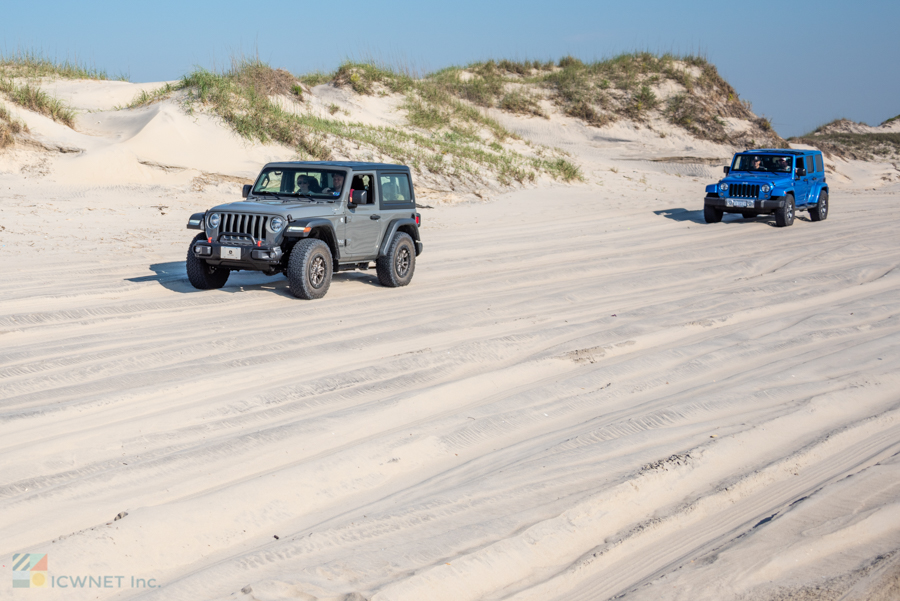
Currituck Beaches Quick Facts
- Several centuries ago, the Currituck Beaches were their own distinctive "Island," thanks to the old Currituck Inlet which separated this region from the rest of the Outer Banks. The inlet has since closed, and the barrier island where the Currituck beaches are found is connected to the Dare County OBX communities of Nags Head, Kitty Hawk and Kill Devil Hills.
- The closest inlet is Oregon Inlet, which is located about 50 miles away from the county border, and separates Hatteras Island from the rest of the Outer Banks.
- Currituck's beaches are considered the northernmost region of the Outer Banks, and span from the town borders of Duck in Dare County to the Virginia State Line.
- The Currituck Beaches are bordered to the west by the Currituck Sound, and are bordered to the east by the Atlantic Ocean.
- There are approximately 20 miles of oceanfront shoreline in Currituck County, however the island is about 1.75 miles wide at its widest point.
- There are miles of beaches that are preserves or used as National Refuges. These regions include the Currituck Banks Reserve and the Currituck National Wildlife Refuge.
- Two of Currituck County's most visited attractions are found on the beaches - The Whalehead in Historic Corolla and the Currituck Beach Lighthouse.
- There are about 500 year-round residents in the Currituck Beaches. In the summer, this number swells to 50,000 weekly visitors or more.
Currituck Beaches Communities
The Currituck Beaches are effectively split into two communities: The incorporated town of Corolla and the 4WD beaches, which are also generally referred to as "Carova." Both regions have their own unique qualities that are appealing to visitors.
Corolla History and Landscape
Corolla was originally a small European settlement of a handful of locals, but the town rose to prominence once wealthy northerners began to build esteemed estates and hunt clubs on the prime waterfowl hunting grounds. Initially known as Jones Hill, the town officially took the name of "Corolla" in 1895 with the establishment of a US Post Office.
Mass development began in Corolla in 1967, when a development company from Virginia purchased a large parcel of land that was divided into roughly 2,000 lots. The initial asking price for these properties was around $8,000, and now lot prices in Corolla are in the $250,000+ range.
When the two-lane NC Highway 12 was established, development boomed in the 1980s and 1990s, and today the town is home to several thousand vacation rentals, resorts, hotels, condo complexes, and an array of shops and restaurants.
Today, Corolla is a considered an upscale beach vacation destination that still remains popular with northeastern and East Coast visitors. Most visitors stay in vacation rental homes, which are found in abundance along the oceanfront and soundfront.
Activities to Enjoy in Corolla
Because Corolla is known as an elite vacation destination, visitors can enjoy a number of a typical beach or resort town activities.
The following activities and attractions are among the most popular things to do in Corolla.
- Surfing
- Sound based watersports, including kayaking, windsurfing, kiteboarding and stand up paddle boarding
- Surf fishing
- Boating via the public launch at Historic Corolla Park
- Golfing at the Currituck Golf Club
- Mini-Golf at two courses, the Corolla Adventure Golf and the Corolla Adventure Golf
- Shopping at multiple boutiques and plazas, including the Timbuck II Shopping Center and the Monteray Plaza
- Dining at the town's nearly 60 restaurants
- Spa Days at area spas, including The Spa at The Sanderling Inn, Diva's Day Spa, and Eden Day Spa
- Public attractions including the Whalehead in Historic Corolla, the Currituck Beach Lighthouse, Historic Corolla Park, the Wild Horse Museum, and the Outer Banks Center for Wildlife Education
Experience more adventure, fun, and style with Kitty Hawk Surf Company. As the trusted Outer Banks retailer for all top surf and lifestyle brands, including, Hurley, Billabong, RVCA, The North Face, Patagonia, Salt Life, Salty Crew, Volcom...
Corolla Wild Horse Tours knowledgeable guides will ensure you and your family have a great wild horse tour! Along the way the guides will stop and point out interesting sites and local history and details of the Corolla Wild Horses history. Be sure...
We offer one of a kind SALT COAST OUTFITTERS brand name tees, long sleeves, performance gear, Yeti tumblers, caps, eyeglasses, and more! Browse the fullest collection of coastal lifestyle clothing on the beach. Featuring a sizable selection of brand...
Welcome to Mike Dianna's Grill Room, home to the finest seafood, USDA prime beef, amazing live entertainment and more! Come have brunch or dinner with us in Corolla on the beautiful Outer Banks. Celebrating over 20 years in the Timbuck II Shopping...
